JWST iconic image reveals a stellar surprise
There is more to the Southern Ring Nebula than meets the eye.
Astronomers realized they would have to reevaluate what they believed to be true about the unimpressive object when they first viewed the stunning images of the Southern Ring Nebula taken by the James Webb Space Telescope.
The Southern Ring Nebula was one of the James Webb Space Telescope’s initial research objectives. It is situated about 2,000 light-years from Earth in the constellation Vela, which is visible in the southern sky. A photograph of the nebula was among the photos famously released to the public in July. The Webb Space Telescope‘s predecessor, the Hubble Space Telescope, has already captured images of the nebula, also known as NGC 3132. Hubble’s images, albeit magnificent, fell short of capturing the whole reality of this dust cloud, which emerged from the implosion of a dying star only 2,500 years ago that was about the size of the sun.
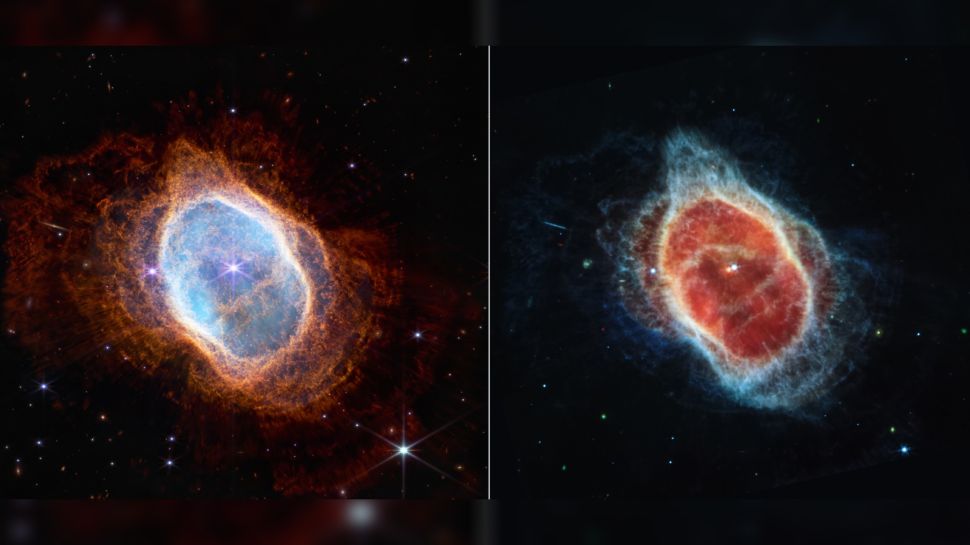
Orsola De Marco, an astronomer at Macquarie University in Australia and the first author of a new report analyzing Webb’s photos, told Space.com that “The Southern Ring Nebula was never thought especially spectacular.” The nebula was well known for having two visible stars in an orbit around one another and for having a long envelope.
In spite of its name, the Southern Ring Nebula, a so-called planetary nebula, has nothing to do with planets and was created when a red giant star collapsed. A red giant, which may be hundreds of times wider than the original star, forms when a star about the size of the sun runs out of hydrogen fuel in its core. The nebula is created when the red giant eventually loses its outer layers, after which it compresses into white dwarf-like cooling remains.
The white dwarf may be seen as a tiny speck of light in the center of the ring in photos from Hubble, outshone by a much brighter partner star that is located 1,300 sun-Earth distances distant. The companion star is still completely functional.
The nebula was shown in a more intricate way by Webb. Two of the telescope’s equipment, the Near Infrared Camera (NIRCam), which detects hot objects like stars, and the Mid-Infrared Instrument (MIRI), which excels at detecting dust, were used to capture an image of the cloud.
The astronomers’ attention was peaked right away by MIRI’s vision. Two stars of equal sizes appeared in place of the one huge and one little star that were seen in Hubble’s vision. And oddly, the white dwarf star, which the scientists were familiar with, was unpredictably red.
De Marco remarked, “White dwarfs are hot; they don’t glow in this wavelength. Therefore, we realized right away that the white dwarf must be covered with a large disk of cold dust.
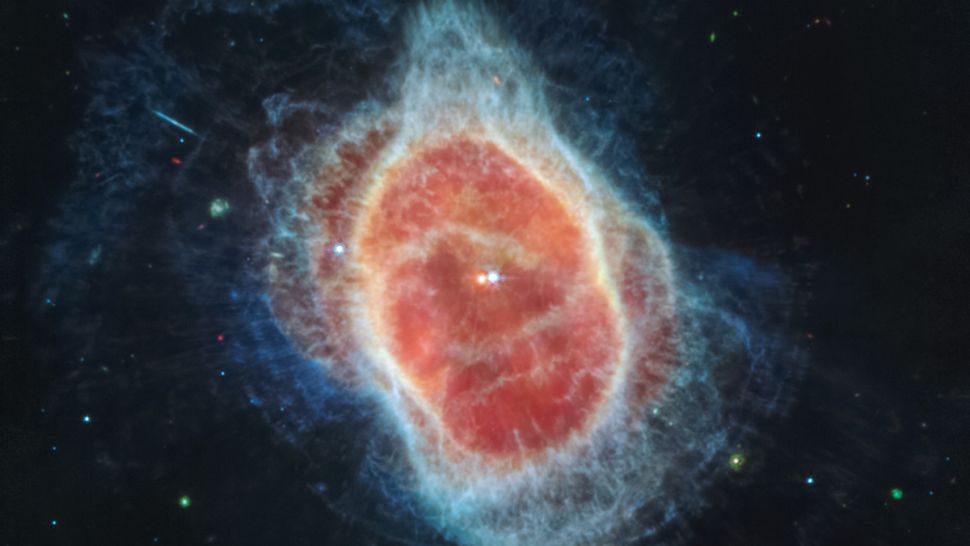
The astronomers immediately pondered how the dust disk formed. Typically, the material that makes up these disks comes from a smaller star circling a larger star whose gravity perturbs the companion star. However, the white dwarf’s known luminous companion was too far away to be impacted by it, which was located in the Southern Ring Nebula’s core. De Marco said that the only conceivable explanation was that a second, undetectable tiny star was circling the white dwarf very closely, spewing the dust. The two-star system abruptly changed into a three-star system.
The surprises, however, didn’t stop there.
The ring-shaped cloud’s relatively flat surface, as observed by Hubble, was transformed into a maelstrom of whirling streams and dust filaments by Webb’s keen eye. The astronomers were particularly drawn to the concentric layers that were extending outward toward the ring’s borders like pond ripples. Such radial shells had previously been observed by astronomers, such as in Webb’s photographs of the nebula encircling the enormous star known as WR140.
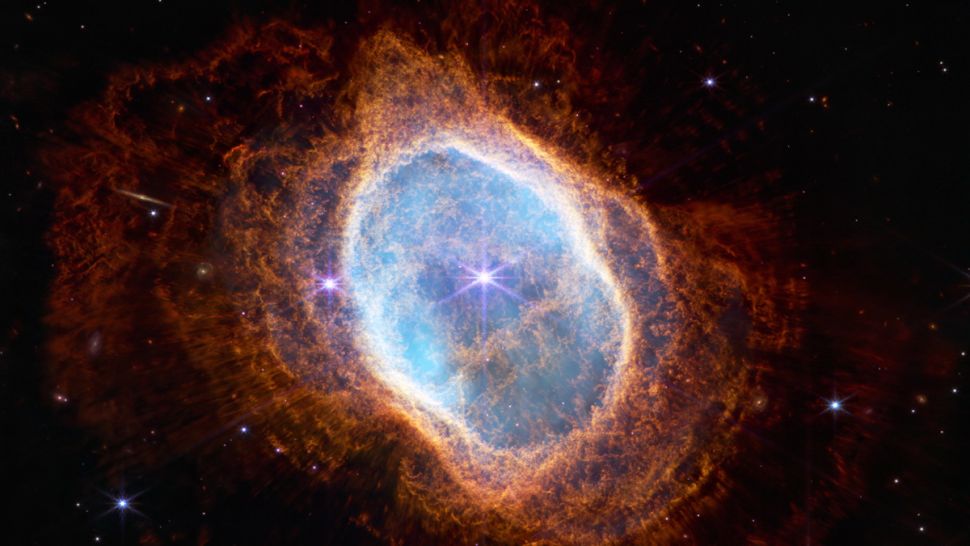
De Marco said, “There are plenty of nebulas with arches like that. “A lot of modeling has been done to try to understand where [the arches come from], but the only model that works is that you have an orbiting companion, and when the star ejects the nebula, the nebula streams past the orbiting companion, acting like a sprinkler and creating a spiral that is ingrained into the expanding nebula.”
Astronomers may discover a lot about the companion star that produced the formations by determining the separation between the concentric rings, said De Marco, including the companion star’s distance from the white dwarf whose ejected envelope produced the nebula. The ripples could not have been formed by any of the two companions—the one that was visible and the one that produced the dusty disk, according to the distance estimate. Between the two stars, a third star was inserted into the system.
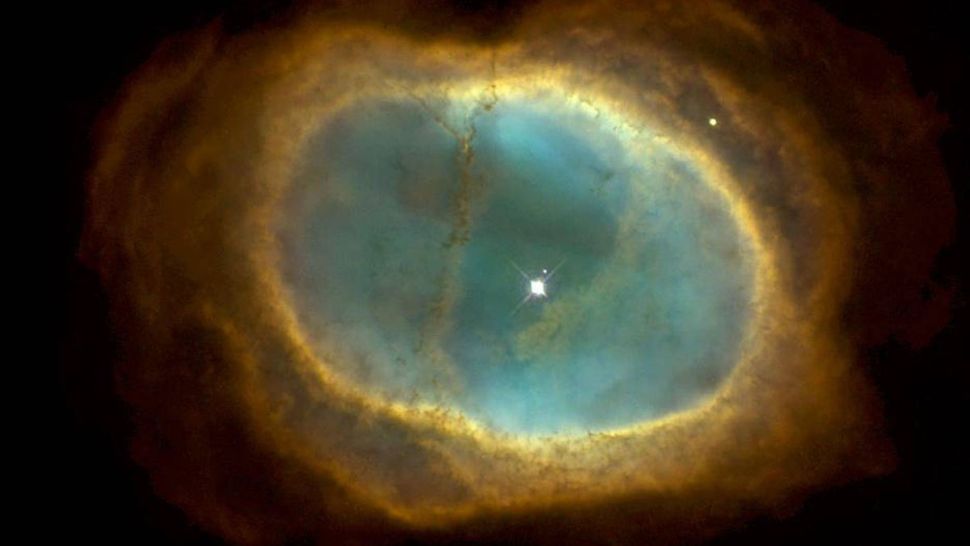
Nobody had been enthusiastic about the uninteresting nebula until it suddenly became really intriguing. A fifth star may be concealed within the dusty disk around the white dwarf, according to further studies of the nebula’s form, so there’s still hope.
One of the study’s co-authors, astronomer Joel Kastner of the Rochester Institute of Technology in New York, said: “We think all that gas and dust we see thrown all over the place [in the Southern Ring Nebula] must have come from that one star, but it was tossed in very specific directions by the companion stars” .
The unanticipated finding of the obscure stars demonstrates how effective Webb is at revealing the mysteries of our cosmos.
The research is described in a paper published Thursday (Dec. 8) in the journal Nature Astronomy.
Do not forget to share your opinion with us to provide you with the best posts !



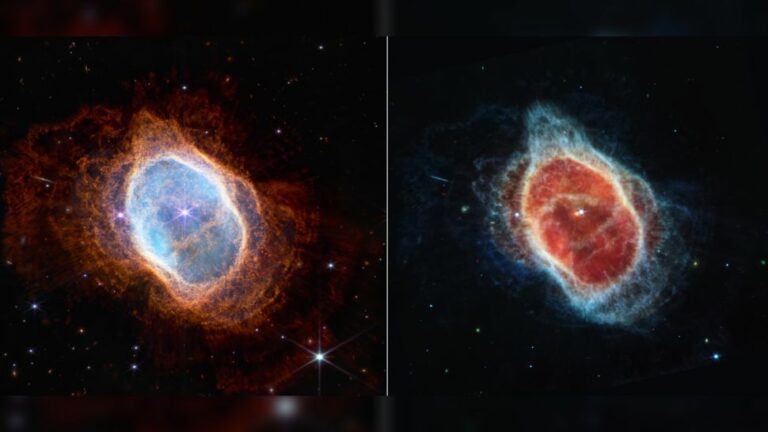
This page definitely has all of the information I needed concerning
this subject and didn’t know who to ask.